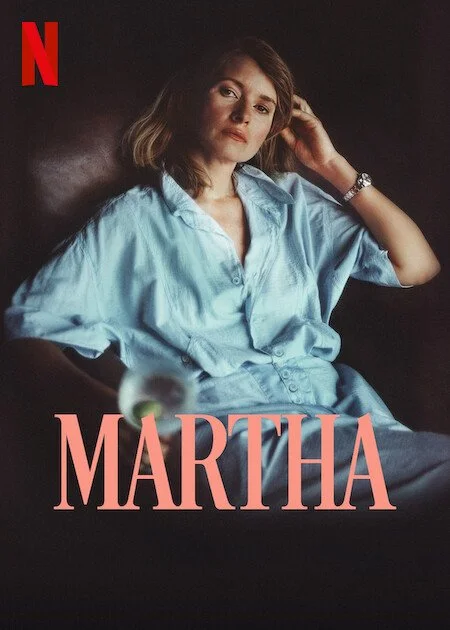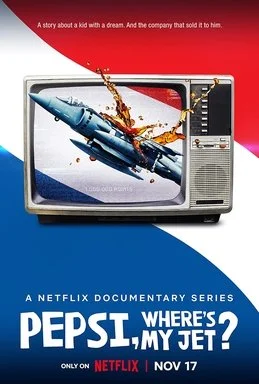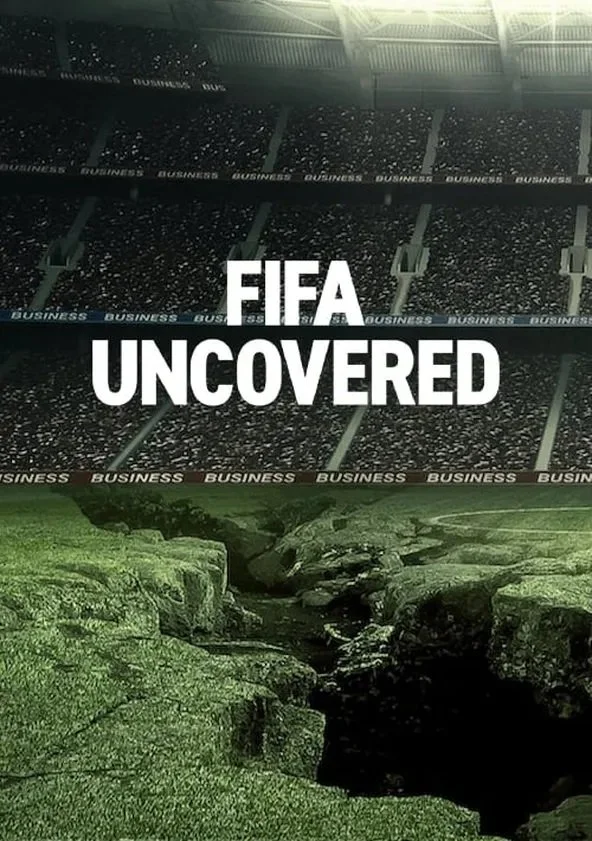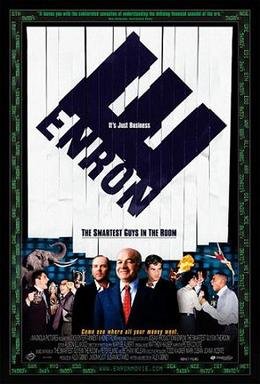Martha
Martha on Netflix plays like a modern epic, tracing the full hero’s arc through the rise, the fall, and the comeback, all wrapped in linen napkins and lemon curd. Martha Stewart begins as an ambitious Wall Street trader turned caterer from New Jersey who builds an empire on taste and control, long before “influencer” was even a word. The film captures her ascent with near mythic energy, the perfect homes, the perfect pies, the aura of calm mastery, before diving into her public downfall with insider trading charges, prison time, and the tabloid frenzy that followed. Yet through it all, she never loses her composure. What makes the documentary so compelling is that it refuses to make her either victim or villain; instead, it presents a person driven by perfection, caught in the machinery of her own legend. And then we have the comeback: the memes, the Snoop Dogg friendship, the reinvention as an unbothered cultural icon who seems both wiser and more self aware. This isn’t just a biopic, it is a myth retold for the media age, a story about ambition, image, and the cost of perfection, and how even after it all she still finds a way to win. Though in a way she never could have foreseen.
Keeping Score: Mahler
This amazing series is less a documentary and more a journey inside Mahler’s mind. Michael Tilson Thomas walks us through the places and memories that shaped the composer - the noise of his Bohemian childhood, the loneliness of being an outsider, the spiritual tension that runs through all his work. It’s beautifully filmed and full of those “aha” musical moments where MTT plays a fragment at the piano and then the orchestra bursts in to complete the thought. The result feels alive and personal, like you’re discovering Mahler’s world in real time. Plus the SF Symphony sounds phenomenal. By the end, you understand not just how Mahler wrote, but why - and it’s impossible to hear his music the same way again. And lucky for us, it’s all on youtube!
Pepsi, Where's My Jet?
This is a fun and surprisingly profound documentary that unpacks a real-life David vs. Goliath legal battle over a Pepsi commercial from the 1990s. When Pepsi aired a tongue-in-cheek ad joking that consumers could win a fighter jet by collecting enough points, one clever college student took them literally and tried to claim the prize. What unfolds is a sharp, engaging look at how a bold challenge exposed the murky ethics of advertising and the power imbalance between corporations and consumers. And beneath the humor and nostalgia, the film raises serious questions about truth in marketing, legal gray areas, and what really counts as false advertising.
FIFA Uncovered
This series traces FIFA’s rise from a modest governing body to a global behemoth, showing how the beautiful game became entangled with bribery, backroom deals, and full-blown geopolitical maneuvering. At the heart of it is the concept (and new word to me) sportswashing: the way authoritarian regimes use mega sporting events to launder their reputations on the world stage. Hosting the World Cup isn’t just about soccer anymore; it’s about legitimacy, influence, and global clout. One of the film’s final lines hits especially hard: “FIFA is corrupt simply because humanity is corrupt.” A sobering reminder that FIFA’s flaws aren’t just institutional… they’re deeply human.
Making Waves: The Art of Cinematic Sound
Most of us don’t think twice about the sound in movies, we just feel it. But Making Waves makes a compelling case that we’ve been overlooking one of the most powerful (and oldest) tools in filmmaking. Silent films were never truly silent after all ;) This documentary peels back the layers of what we hear on screen, revealing how sound - not just music, but dialogue, effects, ambient noise, and silence - shapes every emotional beat of a film. It’s filled with iconic examples: the mechanical breath of Darth Vader, the sensory overload of Saving Private Ryan, the chilling quiet of No Country for Old Men. All of which were designed, sculpted, and obsessively fine-tuned by people whose names you’ve probably never heard - making you realize how much you’ve been hearing without ever truly listening.
The Smartest Guys in the Room
A fascinating, well-told dive into the rise and fall of Enron - a company once hailed as the future of American business. What drew me in was how the film unpacks such a complex financial disaster in a way that’s totally watchable, even if you’re not a finance nerd. It’s part cautionary tale, part character study, and part “how did no one stop this?” mystery. What also stood out to me was how human the story is. Behind all the numbers and boardrooms are real people; some brilliant, some reckless, all deeply flawed. You have to smirk when you notice this film was released just a few years before the 2008 financial crisis, making it more relevant and prophetic than the filmmakers probably realized.
And of course, I can’t not mention the present-day parody.
Los Angeles Plays Itself
A sharp, sprawling, and cunningly funny documentary-essay that reexamines how Los Angeles has been portrayed on screen, and how those portrayals have shaped public perception of the city itself. I love how it pieces together clips from hundreds of movies, from noir classics to action blockbusters, to show how L.A. has been used, misrepresented, and mythologized by the film industry that calls it home. It’s not just a love letter or a takedown - it’s both. Andersen critiques how the city’s architecture and neighborhoods are often distorted or erased in favor of cinematic convenience. We also learn how the physical layout of L.A. has shaped these very movies, e.g. villain lairs in the Hollywood Hills, car chases in Downtown L.A. But beneath the academic tone is a real affection for the city’s strange contradictions and layered identity. It’s a film about movies, sure - but more than that, it’s about how storytelling shapes the places we think we know.
Design is One: Lella & Massimo Vignelli
A graceful, understated documentary that celebrates the work and philosophy of two of the most influential designers of the 20th century. Known for their clean, modernist aesthetic - from the iconic New York City subway map to branding for American Airlines. What really stayed with me was their sense that design isn’t about decoration or trends but about making the world more beautiful and functional through thoughtful, intelligent solutions. I was also fascinated to learn how their shared values and approach shaped everything from modern furniture to packaging to architecture. It’s a quiet but inspiring portrait of two designers who saw no boundaries between disciplines - only opportunities for better design.
Sinatra: All or Nothing at All
A richly rendered portrait of a man who defined not only the sound but the style of 20th-century America, this documentary unfolds largely in his own voice, using the setlist from his 1971 “retirement” concert as a narrative spine. The film traces his journey from a working-class boy in Hoboken - who, I was surprised to learn, studied voice with a singer from the Metropolitan Opera - to a global icon whose influence extended far beyond music. But it doesn’t rest on nostalgia or fame; it delves into the contradictions that made Sinatra so compelling: his constant reinvention, his entanglements with politics and controversy, his need for control, and the vulnerability beneath the polished exterior. He understood image before “branding” had a name, and blurred the line between celebrity and artist long before it became standard practice. More than a performer, Sinatra inhabited every lyric he sang - and that’s why his voice still echoes with such power and authenticity today.
The Deepest Breath
This is one of those documentaries that drops you into a world you didn’t know existed, then leaves you completely captivated. It follows the high-stakes, competitive, almost surreal world of freediving, where athletes plunge hundreds of feet on a single breath. As we follow the international career of two divers, we’re let into an entire subculture built on trust, risk, rivalry, and pushing limits in absolute silence. And as we’ve come to expect from A24 Studios, it’s a visual masterpiece.
David Attenborough: A Life on Our Planet
Part memoir, part urgent call to action - it’s a quiet, powerful reflection from someone who’s spent a lifetime witnessing the beauty and wonder of the natural world. Framed by Attenborough’s signature calm voice, the film walks through the astonishing changes he’s seen over the decades: vibrant ecosystems vanishing, species disappearing, and the planet shifting under the weight of human activity. But it’s not all mourning. Attenborough offers us a hopeful path forward, one that’s still within reach. It’s one of the most heartbreaking yet optimistic perspectives I’ve seen on the subject.
The Bowmakers
A surprisingly soulful and elegant documentary that dives into the world of fine violin bows, a subject that sounds niche, but unfolds like a quiet, reverent journey into artistry, tradition, and obsession. Centered around master bowmakers in the U.S. and France, the film explores the centuries-old craft behind one of classical music’s most overlooked but essential tools. Through interviews with luthiers, musicians, and historians, we learn how a great bow can shape the sound, emotion, and power of a performance. It’s not just about wood and horsehair, it’s about legacy, precision, and the almost spiritual connection between a player and their instrument.
The Story of Film: An Odyssey
This is easily the greatest and most comprehensive history of film documentary I’ve seen. Narrated in Mark Cousins’ distinctive Northern Irish voice, he begins with the birth of moving images and travels across continents and eras to explore the silent era, Hollywood’s golden age, film noir, global protest cinema, the birth of the summer blockbuster, the rise of multiplexes, the digital revolution, and everything in between. It’s not just a timeline though, it’s a passionate, deeply personal love letter to movies, a universal language that continues to evolve through innovation, culture, and daring creativity. It’s 15 hours long, but well worth the ride.
Icarus
Icarus completely caught me off guard in the best way. What starts as a personal experiment about doping in sports quickly turned into something much bigger, darker, and more urgent. I went in expecting a film about cycling and performance enhancement, but what unfolded was a high-stakes exposé on Russia’s state-sponsored doping program, led by one of the most fascinating whistleblowers I’ve ever seen on screen. (Who is still in witness protection btw.) What stuck with me most was how fast the story shifted, from curiosity to conspiracy, and how one relationship, between the filmmaker and a scientist, unraveled a global scandal. What stayed with me wasn’t just the cover-up itself, but rather how fragile our systems of accountability really are.
WeWork: Or the Making and Breaking of a $47 Billion Unicorn
Here we follow the now-infamous Adam Neumann, a magnetic, chaotic founder who convinced the world that renting desks was a multi-billion-dollar movement. It’s a sharp look at how hype, unchecked ambition, and cult-like company culture inflated a business model that never quite made sense. But what made it especially relevant, and oddly poetic, was that this all unraveled at the tail end of the 2010s, just before COVID reshaped how we think about work, offices, and connection. In hindsight, WeWork wasn’t just a business misfire, it was the perfect symbol of a decade obsessed with disruption, image, and growth at all costs.
Man On Wire
This is a gripping, almost surreal documentary that tells the story of French tightrope walker Philippe Petit and his daring (and very illegal) 1974 walk between the Twin Towers. Structured like a heist film, it follows Petit and his crew as they meticulously plan what ultimately feels less like a stunt and more like a poetic act of public rebellion. It’s a celebration of obsession, creativity, and the need to do something extraordinary for no reason other than the sheer joy of doing it. When asked why he did it, Petit simply answers, “There is no why.” And somehow, that says everything.
American Factory
An eye-opening documentary that follows the purchase and reopening of a former GM plant in Ohio by a multinational Chinese glass company. At first, it feels like a hopeful revival for a community hit hard by job loss, but tensions rise as Chinese and American workers struggle to understand each other’s values around work, pay, and hierarchy. What makes the film so powerful is how even-handed and human it is. It doesn’t point fingers, but instead shows how both sides are doing their best within totally different systems. It’s an honest, uncomfortable look at what happens when big cultures collide and when American workers are awkwardly on the receiving end of globalization.
McCartney 3,2,1
An intimate, stripped-down documentary series that feels less like a formal interview and more like eavesdropping on a deep, thoughtful conversation between two music legends. Over several episodes, Paul McCartney sits down with producer Rick Rubin to revisit the music, memories, and magic behind his work. There’s no flashy editing or forced nostalgia - just two people at a mixing console, isolating tracks, dissecting lyrics, and marveling at the creative process. What makes it special isn’t just the behind-the-scenes stories (though there are plenty); it’s how casually McCartney reveals his thinking, experimentation, and sheer joy behind composition. It’s a rare look into how creativity actually works when the tools are simple.
Design Canada
A fascinating look at how a country came to see and define itself through design. What really stood out to me was the story of the Canadian flag. I hadn’t realized how recent it was, or how controversial the shift away from colonial symbols actually became. (*Cough cough Australia and New Zealand) The bold simplicity of the red maple leaf wasn’t just a design breakthrough, it was a turning point in Canadian identity. The film also explores other modernist landmarks like the CBC logo and CN Rail, showing how a small group of designers helped shape a clean, confident visual language for a young nation. You realize that national identity isn’t just built in parliaments or history books - it’s crafted, carefully and intentionally.



















